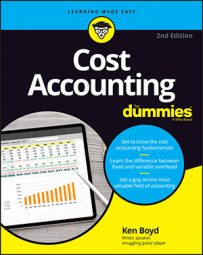When cost accounting, you want to select a method to plan and budget for joint costs. Choosing a method helps you know where you stand during joint production. You can assess if your actual joint costs are on track with your budget. If you’re off track, you can make changes.
The splitoff method in cost accounting
The splitoff point is the point when the costs of two or more products can be separately identified. After splitoff, each product incurs separable (or independent) costs. Allocating joint costs using sales value at splitoff may be the most effective method for planning and budgeting for joint costs. Here are several reasons why:
The method relates the benefit of production (revenue of sales value at splitoff) to the related expenses.
No information on separable costs is required.
The sales value at splitoff may be the best comparison of the products. At that point, you’re making an apples-to-apples comparison.
Sale value at splitoff isn’t affected by other production or costs after splitoff. A product’s sales value after separable costs have been incurred may be very different. If you spend time and money after the splitoff point, you charge a higher price to recover those costs. So it’s fair to say that the sales value at splitoff method is simple, compared with the others.
Other joint costing methods in cost accounting
There’s a possibility that sales values aren’t available at splitoff. The product’s production may not be far enough along to come up with a price. If there’s no price, you can’t compute sales value. In that case, consider a different method.
The next best method may be the net realizable value (NRV) method. The net realizable value method allocates joint costs on the basis of the final sales value less separable costs. Final sales value is simply the price tag — the price paid by the customer. That price is paid after all production costs, whether they are joint costs or separable costs incurred after splitoff.
The NRV method also does a good job of matching the benefit received (final sales value) with the costs incurred (separable costs). The calculation happens at the end of all production. Contrast that with sales value at splitoff. The difference is a matter of timing.
Making a calculation after production ends has some other benefits. The NRV method accounts for all separable costs, regardless of how much higher or lower they are than your plan. NRV also handles any change to the final sales value (price tag) due to a change in market conditions. NPV captures any changes to costs and sale price that might occur as products are produced separately.
The other methods have their challenges. The constant gross margin percentage method assumes that each department has the same level of profitability. The gross margin percentages and total costs (as a percentage of sales) are the same for everything produced. In the real world, different products produce different levels of profit.
Finally, the physical measure method (allocating cost by the weight, volume, or some other measurement of the product) doesn’t relate revenue to expenses at all. You may find that this method is the least useful.
Many manufacturers make a big array of products. Two classic examples are automobiles and computer printers. Each manufacturer in each industry offers many makes and models in order to reach slightly different buyers, usually through different price points. Some products are “high volume/low margin,” while others are “low volume/high margin.”
Here’s a food analogy, you can make money selling 3,000 $1 hamburgers per day or 100 $30 filet mignon dinners per night. Same sales revenue.

